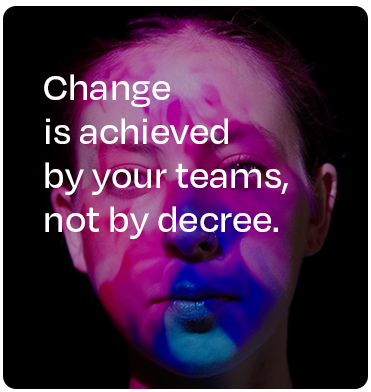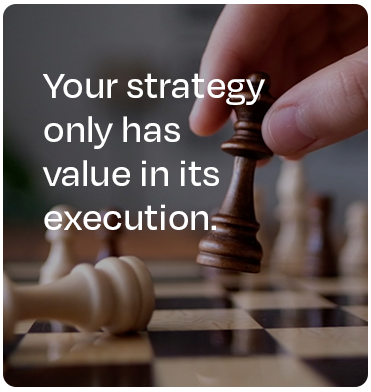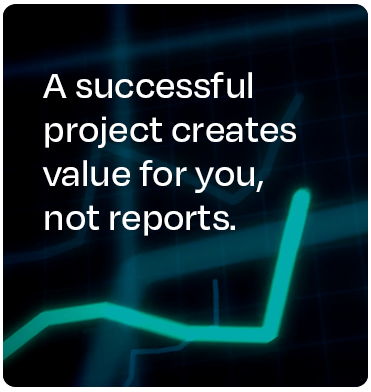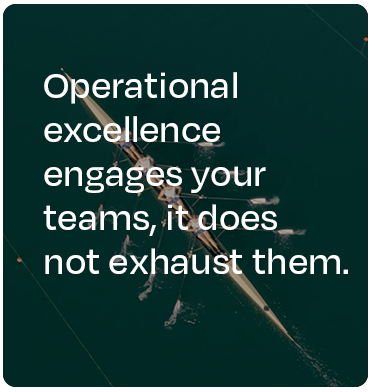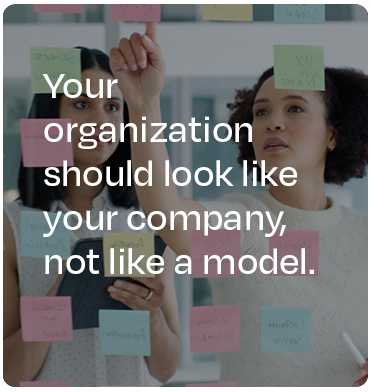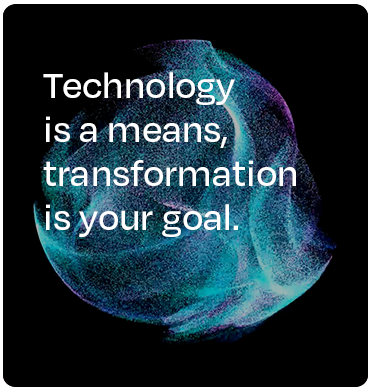75% of transformations fail due to the human factor.
Why? Because processes change while human dynamics are ignored, and the value of change is not demonstrated. The result: passive resistance, cynicism, and projects that never achieve ROI.
Our Living Change™ method reverses this logic. We consider team adoption not as the last step of a project, but as the primary lever for creating value.
Proof through impact: our method in action

The challenge:
A public administration in French-speaking Switzerland faced passive resistance blocking the modernization of a key service, threatening the success of the project.
Our action (Living Change™):
In the co-design phase, we transformed the most resistant “natural leaders” into project ambassadors. Rather than imposing a solution, we helped them shape it themselves so it addressed their legitimate concerns.
The result:
Project buy-in, measured through surveys, rose from 20% to 85% in just 2 months. This positive momentum enabled delivery of the transformation 3 weeks ahead of schedule.
Methodology
The Living Change™ Method in 4 phases:
Phase 1 : Deep listening & value diagnosis
We begin with a 360° diagnosis linking human dynamics to business challenges.
• Individual interviews to identify fears, hopes, and perceptions of value among teams
• Mapping real influence networks (not just the org chart) to identify true change drivers
• Analysis of past attempts to uncover the root causes of previous failures
• Quantifying issues: Translating “pain points” into “costs” and “hopes” into “ROI potential”
→ Deliverable: A map of change dynamics and hidden value diagnosis
Phase 2 : Value-oriented co-construction
The best solution is the one your teams help create.
We don’t offer “off-the-shelf” solutions. We facilitate target design through collaborative workshops, guided by value creation.
• Identification of natural leaders and potential ambassadors
• Change design workshops WITH teams, challenging every idea with: “How does this help us reach our value objective?”
• Prototyping of solutions (processes, rituals, tools) by those who will live them
• Selection of pilots in voluntary areas with strong potential for rapid impact
→ Deliverable: A co-designed target and roadmap validated through proof
Phase 3 : Experimentation & proof of value
Change spreads through proof, not promises.
We test the target in pilots to learn, adapt, and above all, demonstrate measurable impact.
• Pilots with a right to fail (learning > succeeding) but with mandatory measurement
• Impact KPIs (business & human) measured from the very first weeks
• Storytelling of successes based on hard data and concrete testimonials
• Real-time adjustments of the target based on feedback and measured results
→ Deliverable: Proof of the target’s value and momentum for rollout
Phase 4 : Organic amplification
From pilots to large-scale deployment, ensuring value is sustained.
• Deployment plan based on pilot learnings
• Coaching and training managers to become change guardians
• Embedding new practices into company rituals and systems
• Measuring final ROI and capitalizing on successes
→ Deliverable: Adopted change, sustained value, and empowered teams
La différence Ad Valoris
What sets us apart
| Traditional approach | Our Living Change™ approach |
|---|---|
| Imposed change plan | Co-created change |
| Top-down communication | Authentic dialogue |
| Mandatory training | Learning by doing |
| Resistance: 60–80% | Engagement: 75–90% |
The questions your peers are askingThis listening phase sounds long. How do you handle urgent transformations?
This listening phase sounds long. How do you handle urgent transformations?
If teams co-create the change, don’t we risk losing leadership’s strategic vision?
Pilots “with a right to fail” sound risky for budget and results. How do you justify that?
The “emotional map” seems very subjective. How do you use it concretely?
• Identify fear pockets that threaten adoption (and therefore ROI)
• Spot enthusiastic groups to accelerate value creation in early pilots
• Understand real influence networks to know who to convince first to secure the transformation
